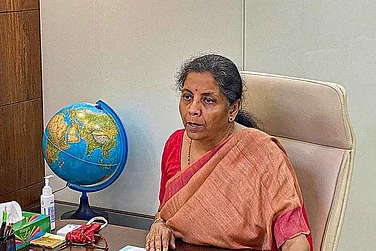Delhi: The Reserve Bank of India on Friday slashed the main policy repo rate by 40 basis points and also extended the moratorium on all term loan repayments by three more months. The loan moratorium has now been extended till August 21 for six months. The central bank said the decision was made to maintain the ‘accommodative’ stance of monetary policy to revive growth and to mitigate the impact of COVID-19.
It reduced the policy repo rate by 40 bps (100 bps = 1 per cent), from 4.4 per cent to 4 per cent. The Marginal Standing Facility (MSF) rate and the bank rate now stands reduced to 4.25 per cent and reverse repo rate at 3.35 per cent. Repo rate refers to the rate at which banks borrow money by selling their securities to the central bank, while reverse reverse repo rate signifies the rate at which the central bank absorbs liquidity from the banks.
Advertisement
According to RBI Governor, Shaktikanta Das, announcing the decision of the Monetary Policy Committee at a press conference, the decision will facilitate flow of funds at affordable rates and rekindle investment impulses. The MPC voted the decision with 5:1 majority, he said.
However, the policy rates set by the MPC is not the sole factor determining the banks’ Marginal Cost of Funds-based Lending (MCLR) rate. Banks also factor in their cost of deposits while determining their MCLR. According to Naveen Kukreja, CEO, Paisabazaar, “The full transmission of the rate cut in the MCLR-linked loans will take some time. Existing borrowers with MCLR-linked loans will continue to repay their loans according to the existing rates till the next interest rate reset date of their loans.”
Advertisement
Here’s a table to highlight the impact of rate cut on consumers’ home loan and car loan.

Notably, the RBI on March 27 permitted all commercial banks, co-operative banks, all-India Financial Institutions, and NBFCs to allow a moratorium of three months on payment of instalments in respect of all term loans outstanding as on March 1, 2020.
“In view of the extension of the lockdown and continuing disruptions on account of COVID-19, it has been decided to permit lending institutions to extend the moratorium on term loan instalments by another three months, from June 1, 2020 to August 31, 2020,” said Das.
Further, the RBI announced several other regulatory measures, which according to Das, is to improve the functioning of markets and market participants, support exports and imports, ease financial stress by providing relief on debt services, and ease financial constraints faced by the state governments.
For instance, the central bank has relaxed the rules governing withdrawal from the consolidated sinking fund (CSF) to enable state governments to meet a larger proportion of their redemption of market borrowings. It has also increased bank’s exposure to a group of connected counterparties from 25 per cent to 30 per cent of the eligible capital base of the bank, effective till June 30, 2021.
The RBI estimates that due to uncertainties induced by COVID-19, the GDP growth in 2021 is likely to remain in the negative territory with some pick up growth impulses in H2 2021 onwards. “Much will depend on how the COVID-19 curve begins to flatten and moderate,” Das said.















 Just one email a week
Just one email a week